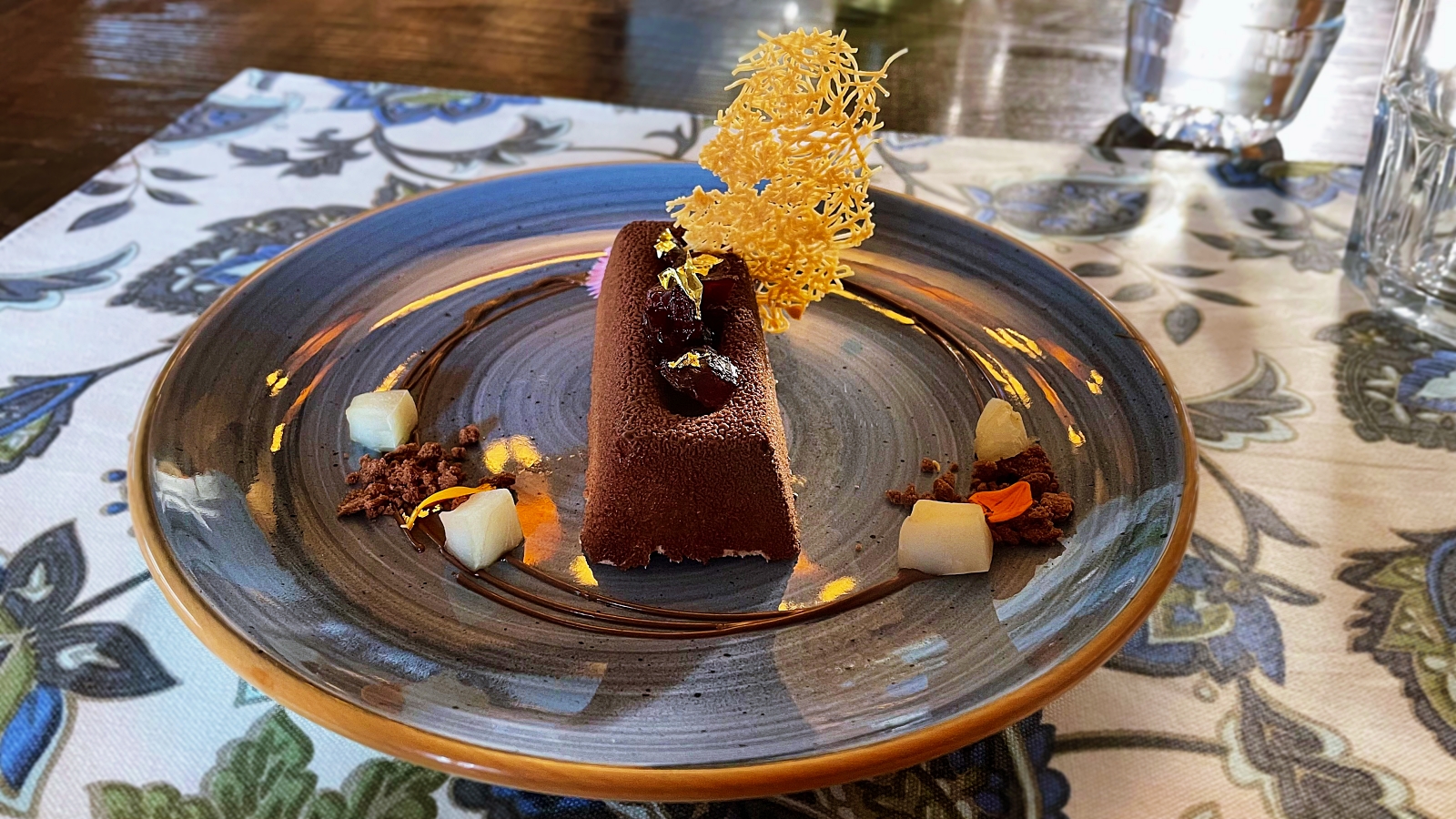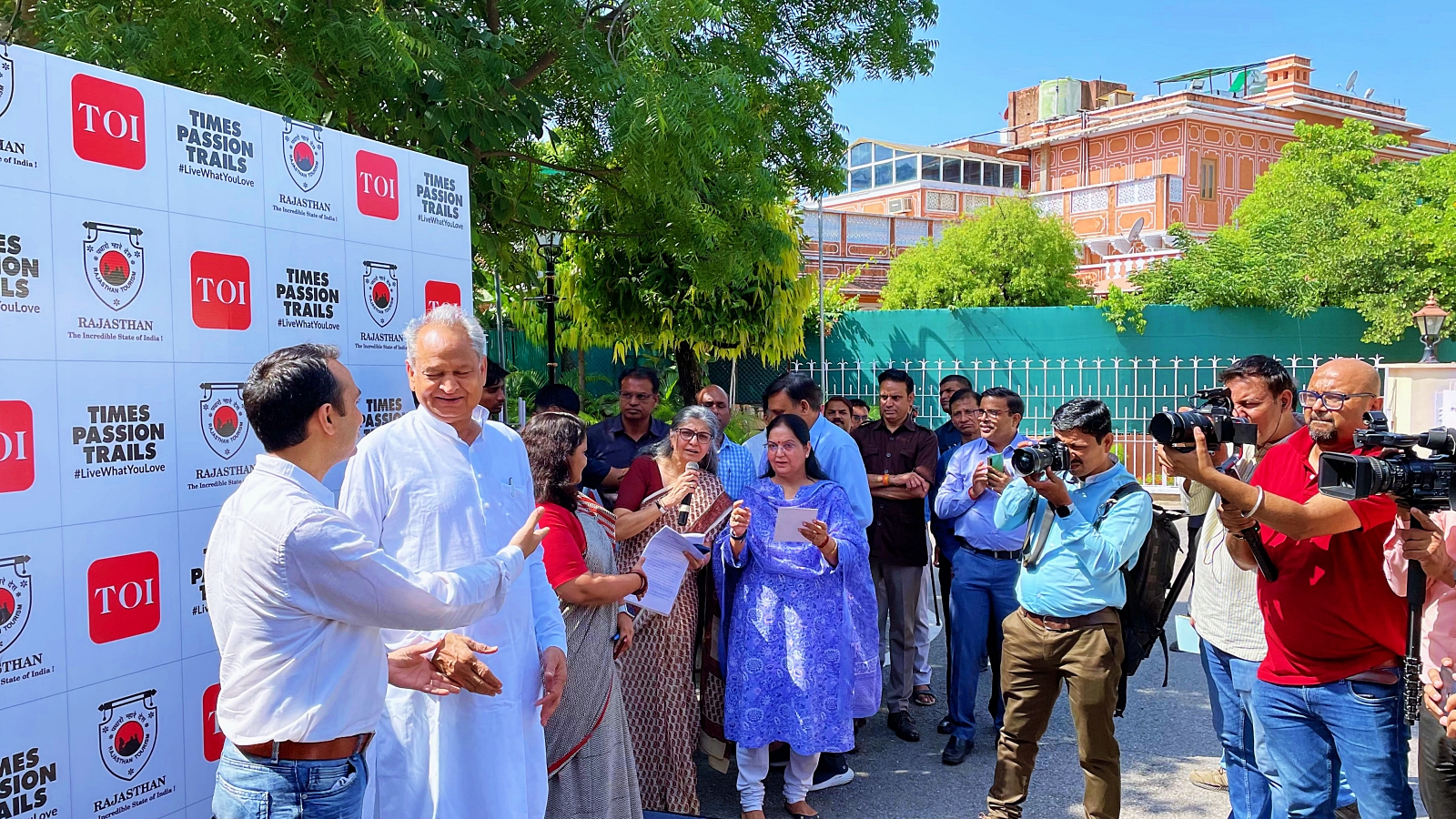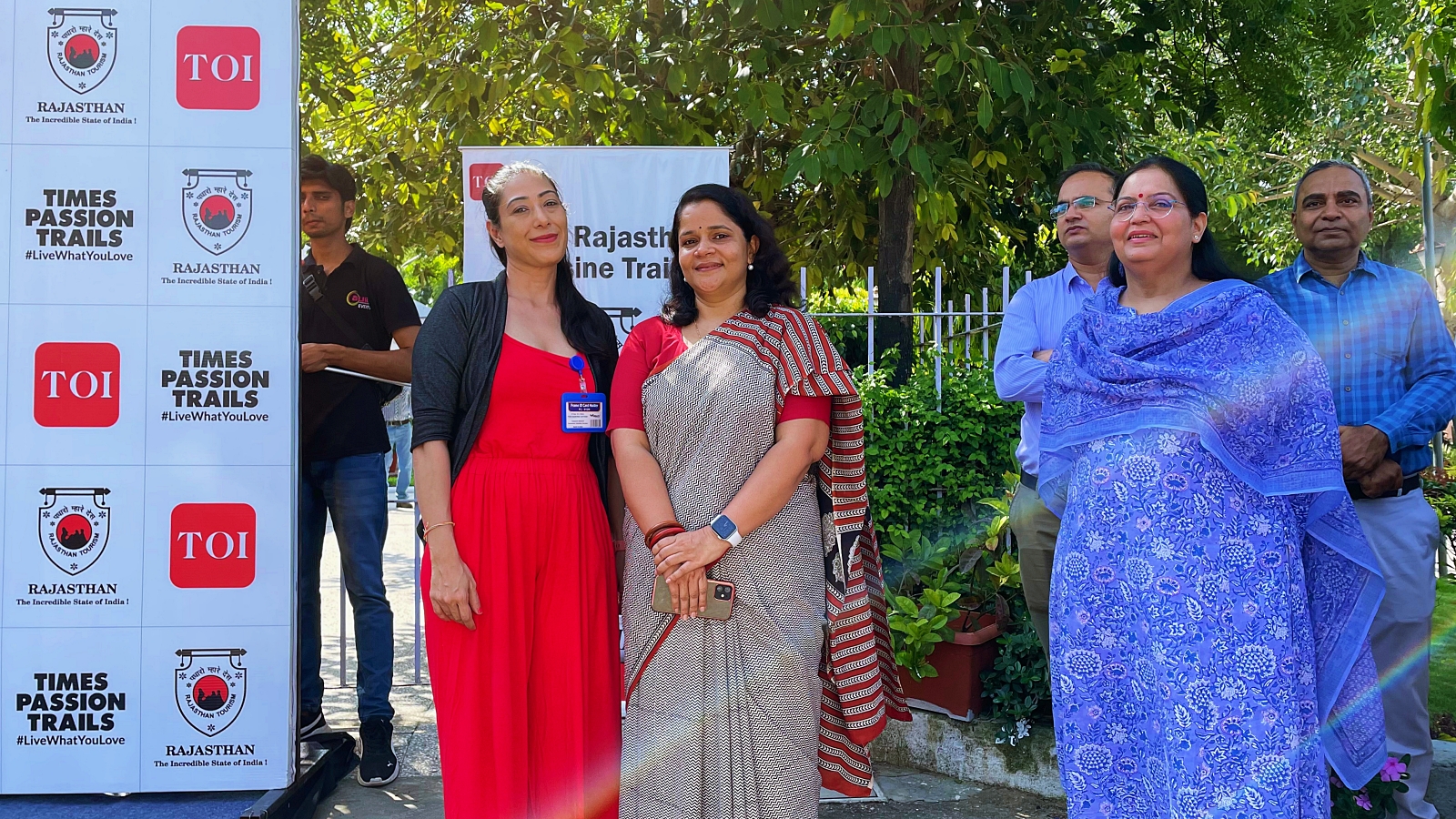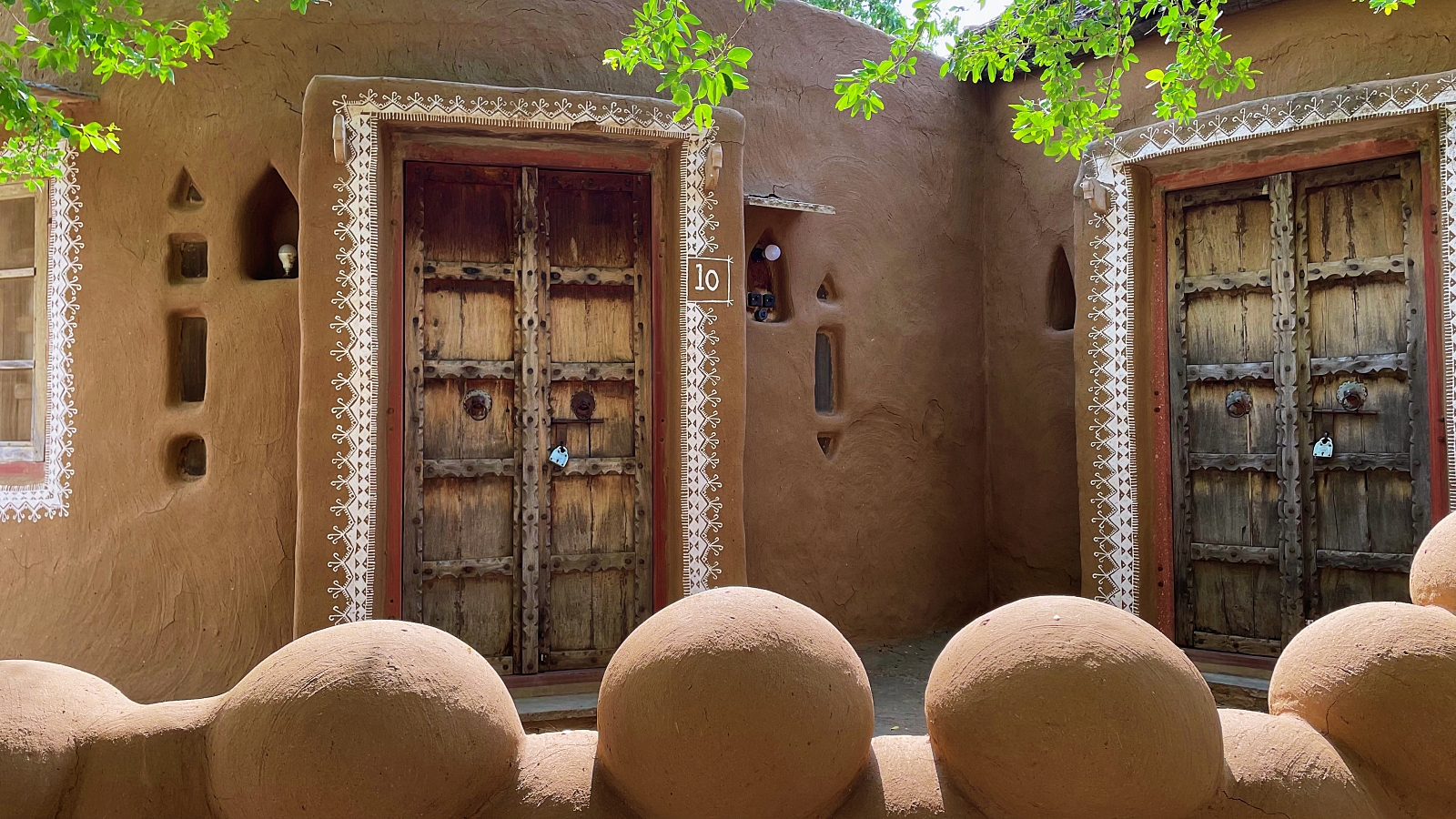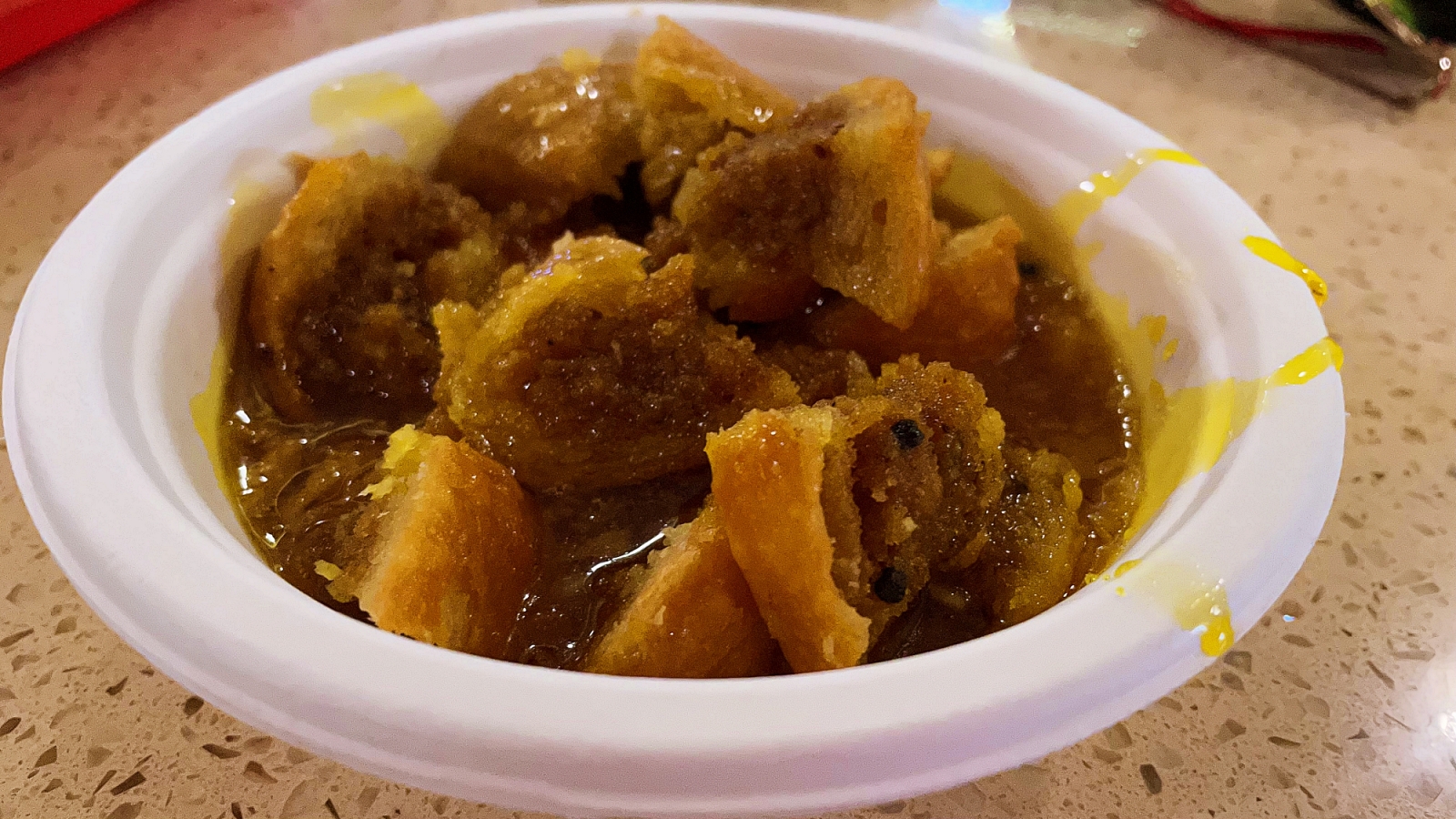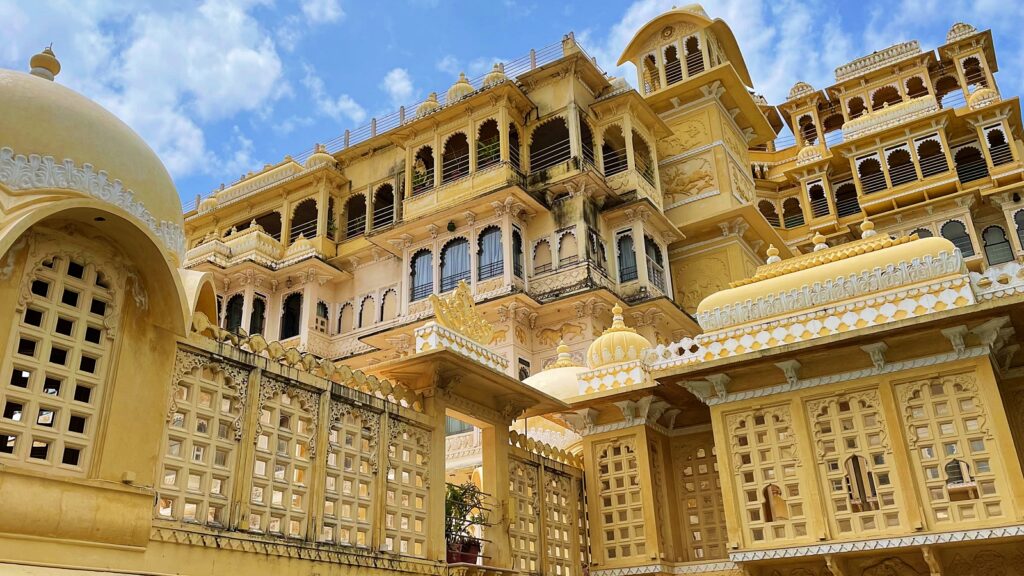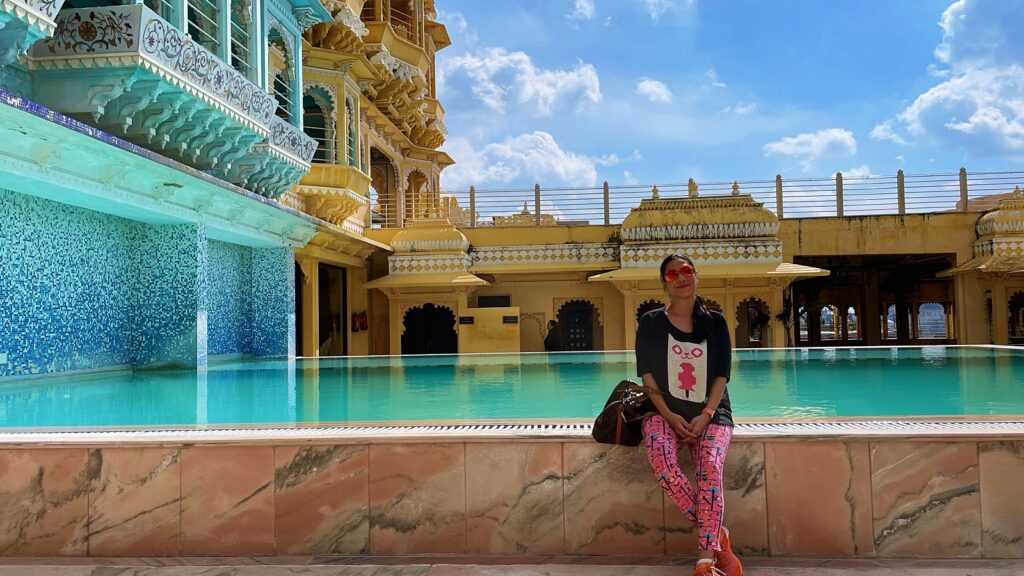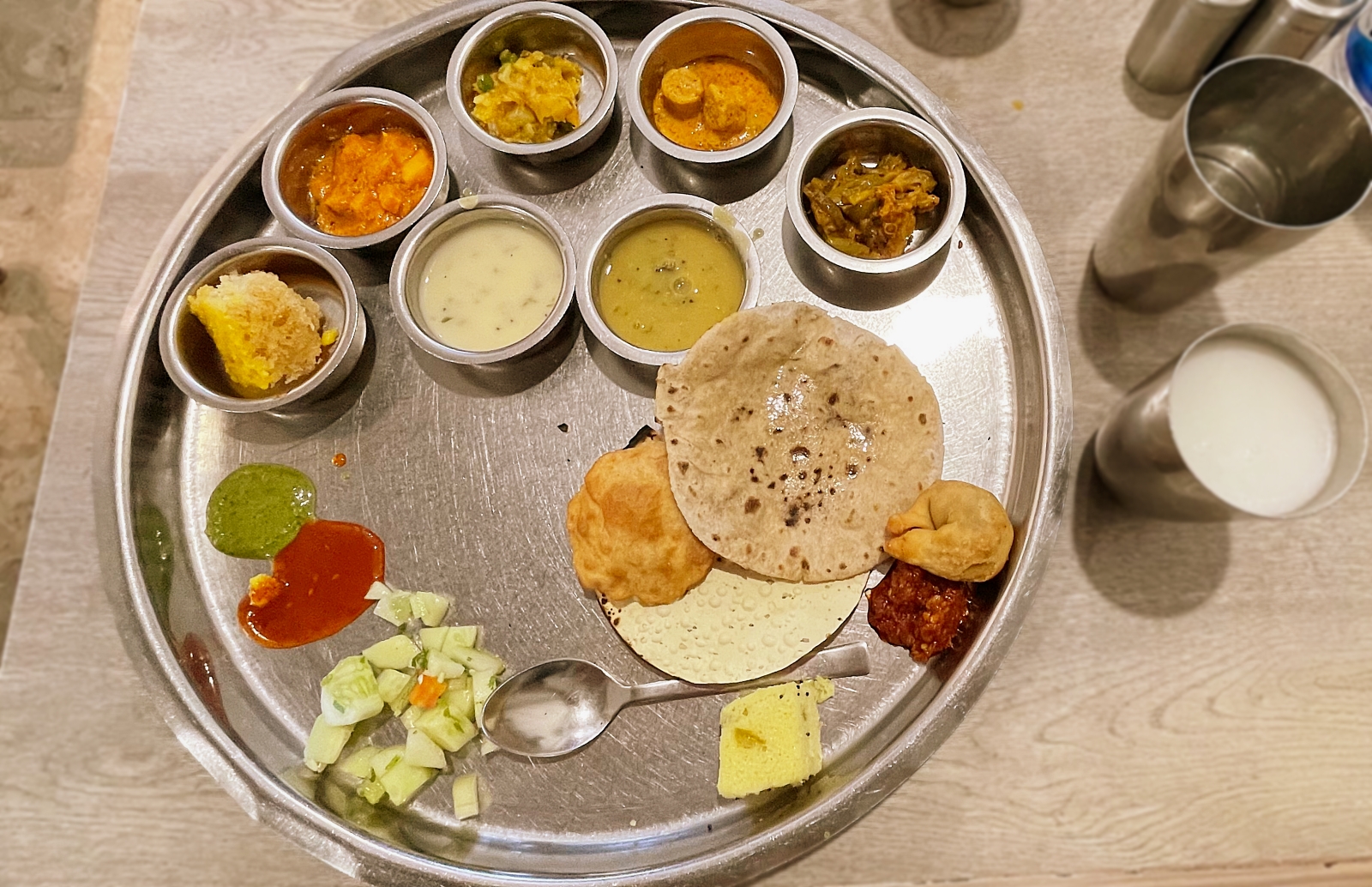Speciality Flavours of Rajasthan
Rajasthan, the land of the maharajas, was established by the valiant Rajputs. Centuries later, Rajasthan’s tumultuous yore is still perfumed with pride and conventions, typical of ancient palaces and colourful celebrations. Many of the spectacular castles and forts that the aristocratic classes of this mediaeval society built are now opulent hotels and pummelling museums. This month between 31st Aug and 05th Sept, I travelled to four monarchical cities with Times Passion Trails and the Rajasthan Tourism Board, where I got to stay in some of the state’s most luxurious palace-turned-hotels and sample the region’s delectable cuisine.

I also had the chance to regard exquisite handicrafts and fine arts fostered by the maharajas’ patronage, as well as, visit some of the local bazaars. Rural life is still deeply rooted in tradition and has a distinctive ethnic style that is heretical to regal life; whereas longstanding customs also add an edge to Rajasthani cuisine, which combines a variety of unusual spices and flavours. Here’s an account of my travels across Rajasthan that I hope will help you plan your next trip in a way that you see beyond the splendid architecture and indulge in local flavours as I did.
Table of Contents
Jaipur, the Pink City
Our Rajasthan trip began at Jaipur, the pink city of palaces and lakes. I stayed two nights at the Hotel Royal Orchid, decorated in Jaipur’s vibrant pink hues. In an offbeat turn of events, we first experienced the cafe culture of Jaipur by visiting OTH (On The House), where we were treated to a personalized 7-course meal curated by restaurateur Dushyant Singh. The décor of OTH blends rustic and contemporary elements, whereas the menu features continental favourites like Italian and European cuisine, to mention a few.
Roasted pepper, almond and goat cheese soup, Burrata and green leaves salad with honey balsamic dressing, garnished with sundried tomatoes and walnuts, Jalapeño grilled chicken, Chicken Mascarpone (moon-shaped) Ravioli served with Italian tomato sauce, Roasted chicken served with orange reduction sauce with parmigiana mash and asparagus, and Milk chocolate semifreddo served with merlot soaked cranberries and bourbon tender coconut, garnished with kataifi Tulie and gold leaf were the dishes we relished to the last bite.
The meal concluded with 100% arabica espresso as OTH is also home to Coffee Sutra, the best coffee outlet in Jaipur. Perhaps, also one of the best in the country!
We then continued with the street food tour around the bustling lanes of Jaipur, where I was enamoured by the tantalising flavours of the region. Heeng Kachori at Puran Ji, Kesar Pista Makkhan and Sri Khand at Gulab Chand Dairy, and a variety of Ghewar, Lassi, Chaas, and Jaipuri snacks at LMB were the standouts. The evening concluded at Hotel Jai Mahal Palace by Taj, where we met officials from the Rajasthan Tourism Board and the Times of India and were delighted by intriguing folk performances and regional cuisines.
CM House, Jaipur
On the second day of our Rajasthan excursion, our Rajasthan food trail was flagged-off by the honourable chief minister of Rajasthan, Mr Ashok Gehlot, and Gayatri Rathore Principal Secretary Tourism, which is, what made it so special. Later we visited Albert Hall (Central Museum) for yet another flag off ceremony.
Desert Resort in Mandawa
We then travelled from Jaipur to Mandawa, a small town in the Jhunjhunu district of Rajasthan famous for its frescoed Havelis. So I thought until I ate lunch at Desert Resort, where I indulged in some of the most unique regional flavours of Mandawa.
This place introduced me to dishes I had never heard of before, including Kadu ka Keema, Khade Masale ka Gosht, Bajare ka Chicken Soyta, Anjeer Bhara Kofta, Began Ki Lonji, and Rabodi Kanda. Each had a distinctive spicy flavour and tasted out of this world. Desert Resort’s kitchen also extends its services to dinners organised on the dunes, by the pool, or under the starlit sky, all to the accompaniment of heartfelt folk music. After lunch, we departed for Bikaner.
Laxmi Niwas Palace, Bikaner
The stunning palaces of Rajasthan are the state’s main tourist draws. In the evening, we arrived at the caramel-hued Laxmi Niwas Palace in Bikaner, one of many forgotten forts and painstakingly renovated castles scattered throughout Rajasthan. Maharaja Ganga Singh, the previous ruler of the Bikaner state, once resided in the Laxmi Niwas Palace. The 45 luxury rooms and 15 royal suites in this 106-year-old heritage palace are all air-conditioned, and several even have direct access to an alfresco terrace. At the Laxmi Niwas Palace, I may have learnt about Rajputana’s rich culture, history, and way of life. However, the food I tried here was unlike any other I’ve ever had.
The dinner here was one of the best I’ve had in India, and some of the dishes that had my heart were Laal Maas (but of course), Paneer Mathania, Pitod ki Sabji, Marwari Gatta Pulao, Ravri Ghevar, and Gondpak. Laxmi Nivas Palace is a must-stay if you ever travel to Bikaner, and you should at the very least schedule at least one meal there. At this stately residence, you will find his highness’ creativity and disposition credited through many of the friezes on the palace’s walls, the exquisite filigree work, and the latticed screens. I felt deeply influenced by the grace and charm of this royal residence and was ecstatic to be spending the night at Laxmi Niwas Palace, which was once the royal abode of Ganga Singh Ji in 1904.
Chhotu Motu Joshi
While the night was spent at a royal residence, the third day commenced with relishing local flavours at Chhotu Motu Joshi, a sweet shop close to Kote Gate. Bikaner’s Chotu Motu Joshi is a very authentic experience.

Here we savoured Bikaneri specialities like Mirchi Wada, Kachori, Poori Bhaji in a characteristic gravy, Paneer Tikka, Clay pot-made Jalebi, Dahi Wada and creamy lassi, all of which left a favourable impression. You should visit this restaurant for breakfast if you had the chance, as I would again! But before you leave Bikaner, make sure to stop by the Chunnilal Tanwar Sharbat store, where you may sample some of the state and nation’s most distinctive quenchers.
Chunnilal Tanwar Sharbat
Offering a refreshing respite from the typical hustle and bustle of the city, this yellow-and-blue store, takes you on a beverage journey through Rajasthan’s fruits, flowers, spices, sandalwood, and other ingredients. One of their well-known sharbat (also my personal favourite) is BELA which is made of Arabian jasmine, while some of the others are Panjeeri made of coriander, Chandan of sandalwood, and Safed Gulab of white roses.

Interestingly, the earthen clay cups they are served in are what enhance the flavours of their sharbat. After taking in the earthy aroma, you sip the sharbat, which further ties you to earthly roots. This shop was established in 1939 and even after 83 years, they probably serve the best Sharbat in the country. Each beverage is extremely flavorful, low in sweetness, economically priced and worth trying not once but a zillion times.
Karni Mata Temple
On our way from Bikaner to Jodhpur, we made a brief stop at the one-of-its-kind Karni Mata Rat Temple in Deshnoke, and at Khimsar Fort in Khimsar for a scrumptious lunch. It took us 40 minutes (30 km) to reach Karni Mata Temple from Bikaner. Maharaja Ganga Singh Ji is said to have completed the structure in its present form during the beginning of the 20th century in the style of late Rajput architecture. The 25,000 or so black rats and a few white rats that reside in the temple and are venerated there is what makes this place renowned. These holy rats are regarded as Depawat Charanas from their previous life because they both have mice and humans as their respective gestation partners.
Legend has it that Lakshman, the son of Karni Mata, is said to have perished in a pond near Kapil Sarovar in Kolayat Tehsil while he was attempting to drink from it. Karni Mata begged Yama, the god of death, to bring him back to life. Yama initially refused, but in the end, he gave in, allowing Lakshman and all of Karni Mata’s male progeny to be reborn as rats. According to temple regulations, if you walk on a rat by mistake and it dies, you must replace it with a replica made of real silver or gold.

A stunning marble front stands with solid silver doors in front of the temple. More silver doors with panels showing the numerous Goddess legends are across the doorway. In the inner sanctum, the Goddess’s picture is revered! The few white rats are said to be very holy as they are thought to be the physical representations of Karni Mata and her four sons. Visitors make significant efforts to draw them out by providing prasad, since seeing them is a great blessing.
Khimsar Fort, Rajasthan
After our visit to the Karni Mata Temple, we set out for Jodhpur, and four hours later, arrived at the Hotel Khimsar Fort for another regional feast of local flavours. This historic estate, built in rural Rajasthan in the year 1523 by Rao Karamsi, is perched on the edge of the Great Indian Thar Desert. I was pleasantly surprised to see its sweeping lawns and gardens in the middle of a desert. But eating like majesty is the only surefire way to feel like royalty!

Having said that, Bhutta aur Boondi ka raita, Ker Sangri pickle, Aloo Jodhpuri, Dhandushi (mixed veg), Pitod Rajasthani, Gatta Ka Pulao, Gond Pak Halwa, blueberry baked yoghurt, and Besan ki Chakki were the standouts from my dining experience at Khimsar Fort. The red-chilli-cooked Jungli Maas, however, was the dish that stole the show for me. I’d say, look no farther than Khimsar, if spending time in a fort is your idea of the perfect vacation.
The fort has grandeur written all over it and is blessed with a charming ambience. The architectural splendour of this palace, whose magnificence is encased in its war-blotched walls will enchant you just as much as it mesmerised me.
Marugarh Fort Resort
On the night of our third day in Rajasthan, we arrived at Marugarh Resort which opens onto the meandering approaches through expansive doors. Once inside, the extravagant replaces the austere. Marble and stone carvings, fountains, and coloured glass can be seen everywhere in this haven of natural tranquilly at the base of a huge sedimentary hill. We spent the night here and were charmed by the fort’s blend of contemporary design with the domes and arches of bygone eras. Tucked away in lush surroundings, the 14-acre Marugarh Resort offers equally delicious cuisine that fits the mood.
During my stay at the resort, I enjoyed a great buffet of regional cuisine with folk performances in the backdrop, yet it was the rare KHAD GHOSHT, a Rajasthani mutton dish cooked underground, that made my visit truly memorable. The chefs at the resort pulled out the Ghosht right in front of our eyes and while observing the process was intriguing itself, the flavour of this meal was surely even better. When you are here, you must give it a try! The chirping birds serve to emphasise how peaceful and still the environment is. With all the contemporary amenities and a touch of Rajasthani tradition, this fort-turned resort is a one-of-its-kind place in Jodhpur.
Janta Sweets Home, Jodhpur
After spending the night at Marugarh Resort, we ventured out into the city the next day and it was our trip through the local food shops that truly introduced us to the blue city of Jodhpur. I think one of the most sumptuous ways to experience Jodhpur is to eat like a local – and you must commence your city tour by getting breakfast at Janta Sweet Home, the sweet and savoury business that has long been existing since 1980.
You simply cannot miss their Pyaz Kachori, Jalebi, Mawa Kachori (sweet), Dhoklas, Mirchi Wada, Raj Kachori with Dahi, Kesar Pheni, Neem Masala Maida Fali, Dal Badam Chakki and creamy Lassi. All too delicious!
Vijay Restaurant
After a food exploration at Janta Sweets Home, we subsequently took a tour of the city’s local market around the clock tower and eventually, landed at the blue-coloured Vijay Restaurant to try the famed Malai Ki Roti of Jodhpur.
But when here, we also tasted Gulab Jamun ki Sabji ka sandwich as well as Panch Mewa Chakki, Prem ka Pyala, which is a Mawa and dry fruits, infused dessert of its kind. This small restaurant is right next to the Achal Nath Temple, which is a beautiful temple worth taking a look.
Bird’s Eye View from Mehrangarh Fort
We ate a lot, so it was only right that we strolled around Jodhpur’s high Mehrangarh Fort to take in the surrounding history and get a bird eye perspective of the blue city.
This fort was built in 1459 by Rajput monarch Rao Jodha above the surrounding plain, while the rest of the current building dates from the 17th century. Its seven gates include Jai Pol (victory gate), which Maharaja Man Singh constructed to honour his triumphs over the troops of Jaipur and Bikaner in 1806. The route to and from the city below is winding.
Jodhpuri Lunch at Shandar Bhoj

Before leaving for Udaipur though, we stopped at Shandar Bhoj to relish the local flavours of Jodhpur and here we tried some very delicious local specialities such as Kabuli, Kaju ki Sabji, Gulab Jamun ki Sabji, Chaki ki Sabji, and Gatta Pulao to mention a few.
Chunda Palace, Udaipur
Later that evening, we arrived at the Chunda Palace in Udaipur where we had a sumptuous dinner and spent the night. This resort resembling a palace was gleaming in all its splendour under Udaipur’s starry night sky, and by all means, it was love at first sight!
The property’s architectural splendour from the inside is far more intriguing. Not only were we welcomed to lavish rooms, but also, a candlelight dinner on the rooftop terrace overlooking the lake. Amongst all the lavish buffets I devoured here, Fish Jaisamundhi had my heart.
Lake Pichola, Sajjangarh Palace & Amet Haveli
There’s so much to do in Udaipur, but what you should really begin your city tour is that, with a stroll at either Fateh Sagar Ki Pal or Lake Pichola.
During my stay in Udaipur, I took a trip to the hilltop Sajjangarh Monsoon Palace one afternoon, savoured an authentic Rajasthani Thali at the Natraj Restaurant, and enjoyed a heartwarming dinner at Restaurant Ambrai at the Amet Haveli by the lakeside.

Our Rajasthan food trail concluded at Amet Haveli, with a fantastic closing ceremony bringing this extraordinary culinary trail to a close.





